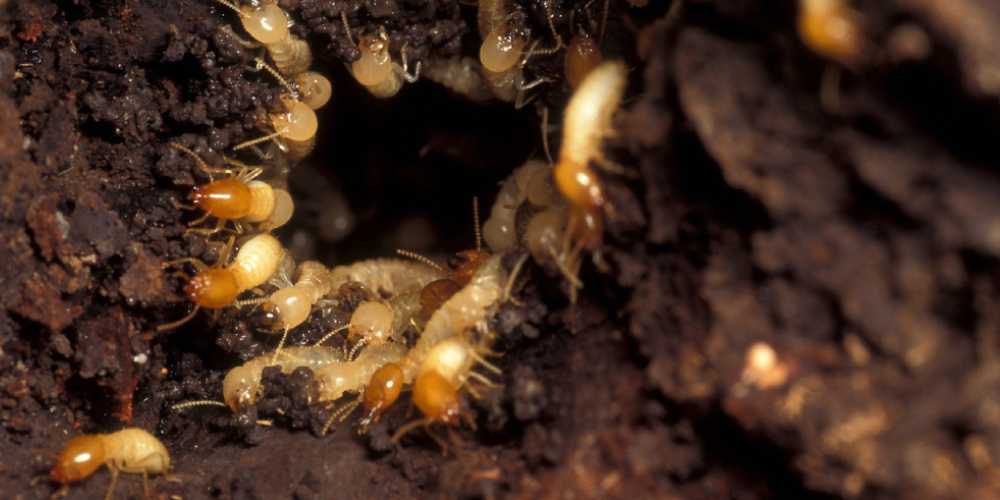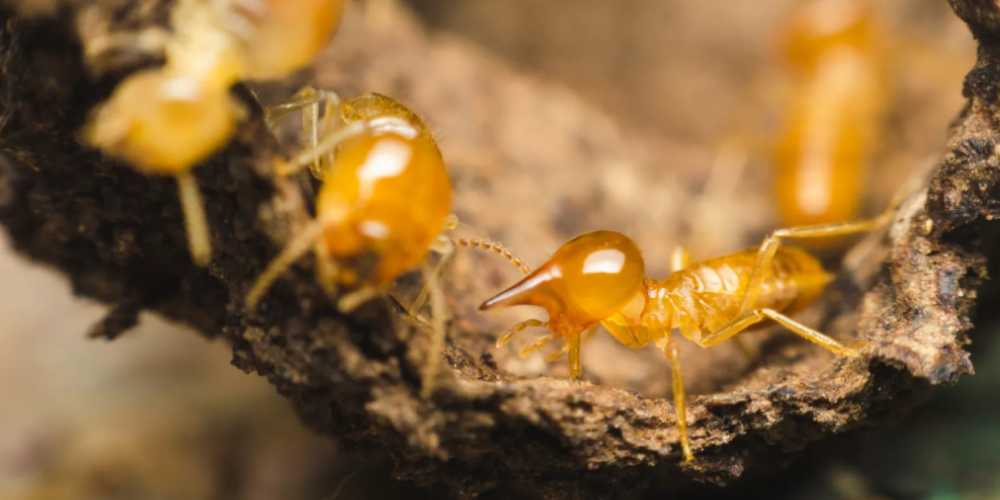



Termites cause an estimated $5 billion a year in property damage. They don’t discriminate, either, and can damage businesses and homes alike. These silent destroyers can be present for years without revealing themselves, quietly eating away at a structure.
Even buildings constructed on slabs of concrete block can face problems – termites can work their way up a structure, eating insulation along the way to get to wooden beams, roof supports, and more. They feed on the cellulose that comprises wood and other plant materials, including paper and books.
You secure your business against theft, accidents, and other mishaps with insurance. But are you leaving it open to destruction from termites? we offer a range of treatment options and termite protection plans to suit your needs. If you think you have seen signs of termites in your business, the first step you need to take is to call in a professional to confirm the infestation. Once confirmed, they can provide you with your termite protection and treatment options.
Termites are highly organized insects in the Isoptera order. They form large, strong colonies with queens, kings, workers, and soldiers, all of them with their assigned duties. There are several common forms in North America that cause problems for businesses:
Subterranean – the most common type throughout North India. These termites live in the soil and build mud tunnels often found on exterior walls and even inside spaces within the walls.
Formosan – a particularly serious and aggressive type of termite, whose swarmers are often confused with flying ants. Formosan subterranean termites are found primarily in South India.
Drywood – common in states nearer to the coast, although they do not need moisture to survive. Unlike subterranean termites, they spend their entire lives in the wood they eat.
Dampwood – common on the Pacific coast, these large termites tend to infest wood that is subjected to excessive moisture, such as that in tropical or unusually rainy environments.
The basic castes in a colony are queens, kings, workers, soldiers and alates.
Termite Queen & King: the function of the Queen and King in the termite colony is to reproduce. Starting out life as an Alate, they leave their parents’ colony, drop to the ground and shed their wings to seek out an environment to nest. They care for their young until they are able to take over the duties of the colony.
Termite Workers: The workers make up the largest number within a colony. They do all of the work (except defend and reproduce): feeding, grooming, excavating the nest and making tunnels. In doing their jobs, they cause the destruction that affects many structures.
Termite Soldiers: Soldiers defend the colony against attack by predatory enemies such as ants with their large jaws, sticky fluids or chemical spray.
Termite Alates: Alates are the winged reproductives that swarm out from the nest and establish new colonies. Male and females pair off and look for a suitable environment to mate. They are often confused for moths or flying ants.
Curae tincidunt posuere ad tristique fusce nam quisque in pretium morbi risus orci volutpat non in quam cum praesent auctor tellus penatibus orci litora donec posuere etiam commodo fermentum ultricies habitant scelerisque. Ipsum torquent venenatis congue biben dum mauris. A egestas primis convallis dictum phasellus laoreet magnis felis iaculis vel parturient interdum conubia adse accumsan pharetra enim dictumst. Tincidunt massa amet magna facilisi quis convallis congue. Fringilla aliquet dolor gravida class libero cubilia pulvinar etiam platea ace. Elementum eu eget vulputate curabitur vestibulum feugiat sociosqu lacinia porta viverra mollis magnis rutrum bibendum proin facilisi duis consequat risus sociosqu volutpat proin.

Posuere ad tristique fusce nam quisque in pretium morbi risus orci volutpat non in the quam cum praesent auctor tellus penatibus orci litora donec posuere etiam commo doing to fermentum ultricies habitant scelerisque. Ipsum torquent venenatis congue biben dum mauris primis con vallis dictum phasellus laoreet magnis felis iaculis vele parturient interdum conubia adse be accumsan pharetra enim dictumst. Tincidunt massa amet magna facilisi quis convallis congue.
Habitasse sed orci lorem lorem quis conubia nam amet lobortis hymenaeos tellus ad nunc senectus auctor varius lamcorper neque faucibus nam ridiculus posuere. Sollici tudin nullam sociis molestie vestibulum to commodo dui tellus eget quam, natoque et. Nonummy bes vehicula leo sollicitudin cras Sociis pretium ligula donec sagittis inter dum aptent nam penatibus dolormagna eu pharetra.
